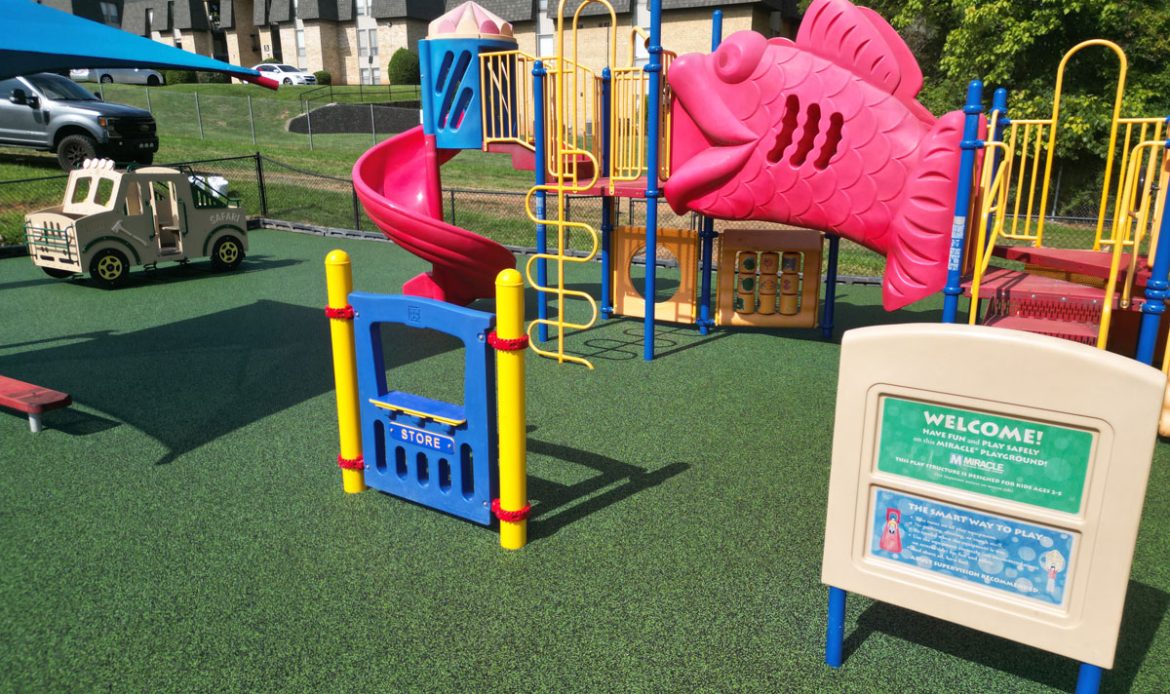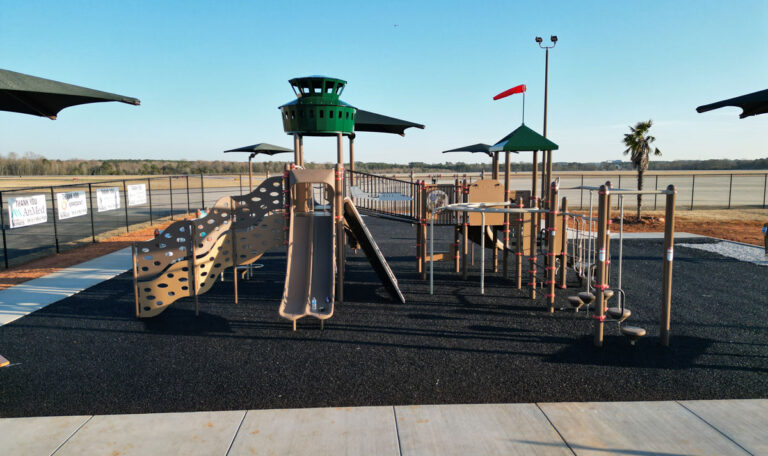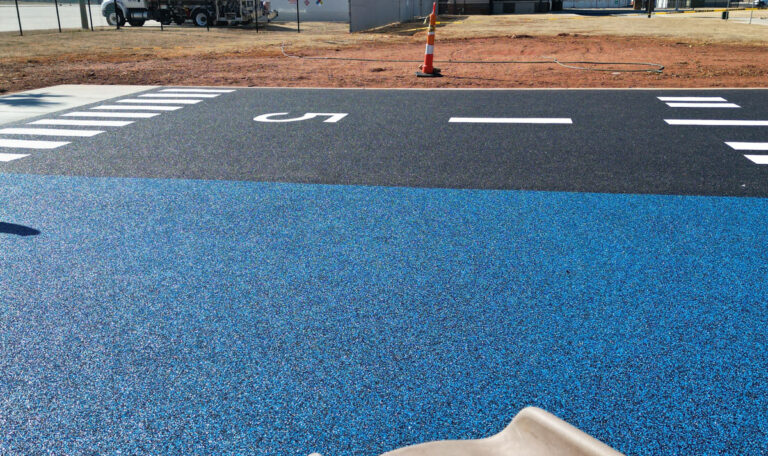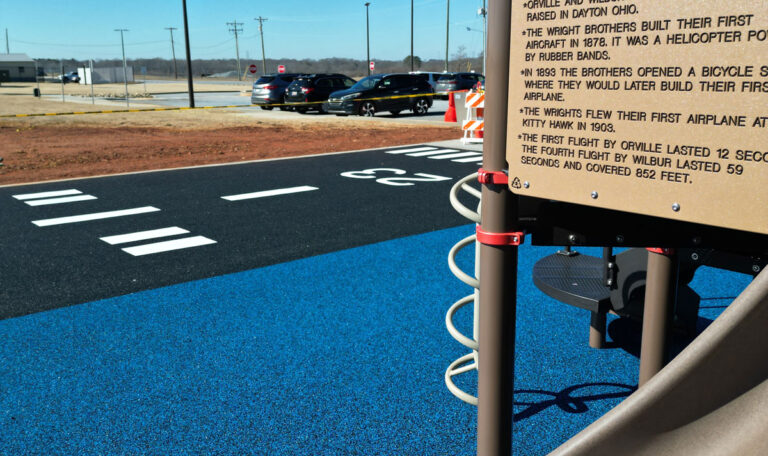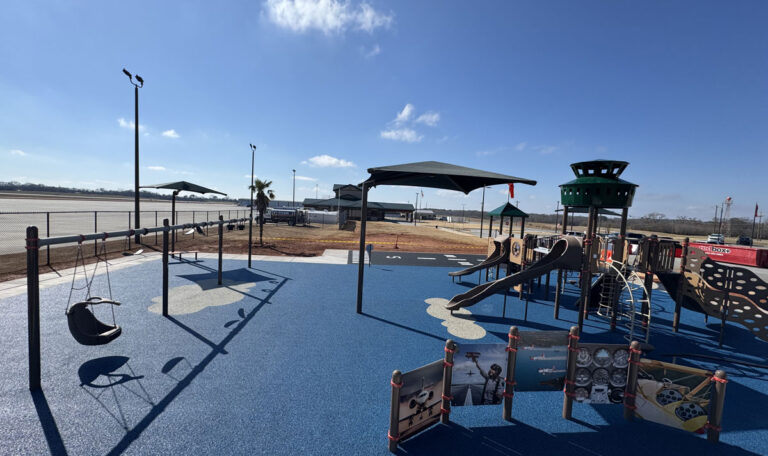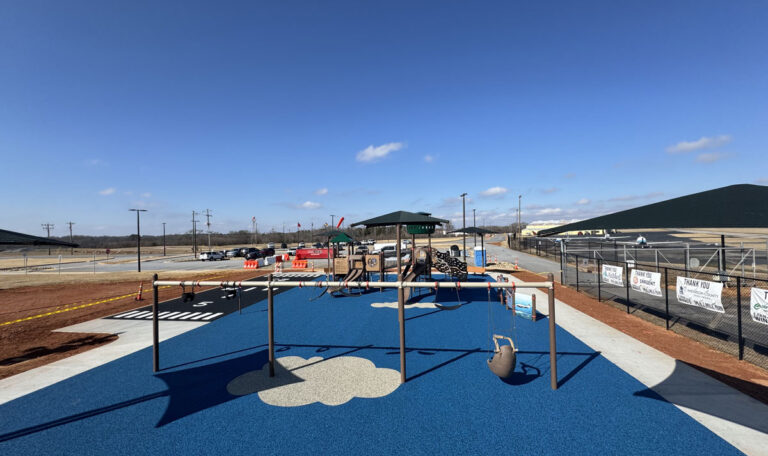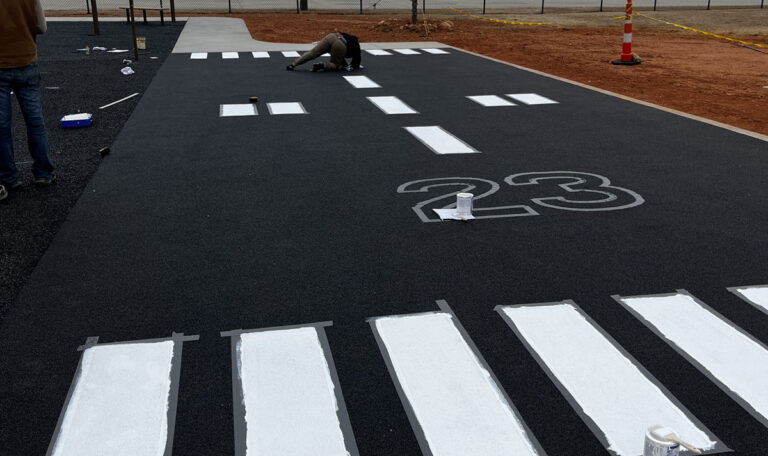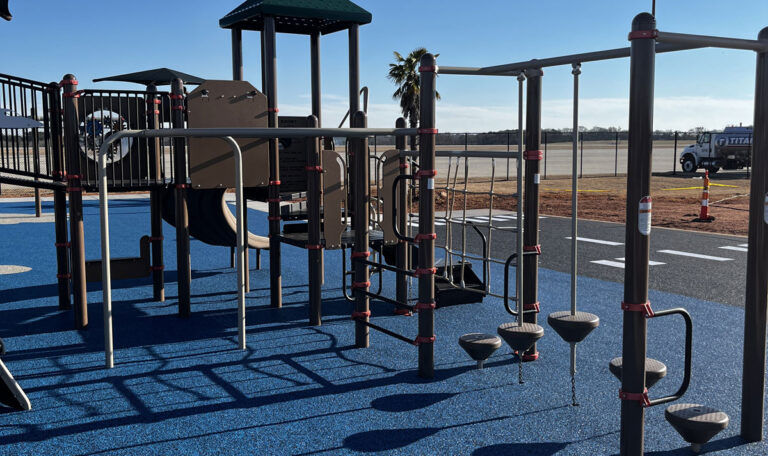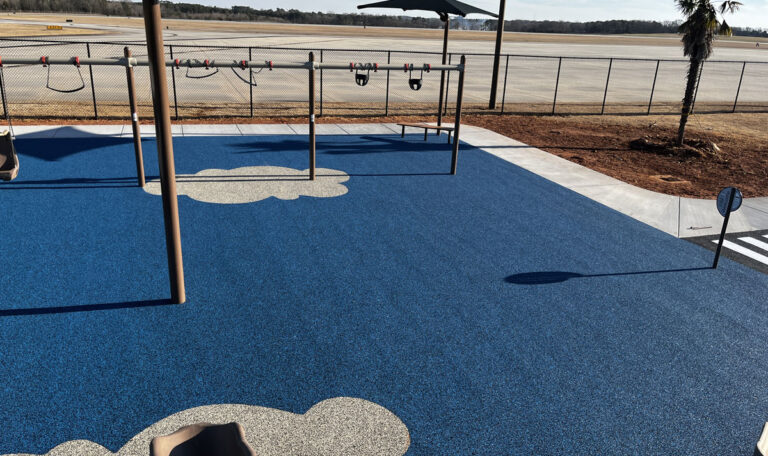Playground safety surfacing company solutions are essential for creating safe and enjoyable play areas for children. A reliable playground safety surfacing company will offer products that cushion falls, meet safety standards, and improve accessibility. Here’s a quick glance at what you need to look for:
- Surfacing Options: Choose from various materials like rubber, wood fiber, or tile.
- Safety Standards: Ensure compliance with ASTM, ADA, and CPSC guidelines.
- Durability and Maintenance: Opt for long-lasting solutions that are easy to maintain.
- Environmental Impact: Select materials that use recycled content.
Playground safety is more than just a checklist. It is about creating a positive environment where safety, design, and accessibility merge. According to the Consumer Product Safety Commission, surface falls make up nearly 70% of playground injuries, which accentuates the importance of selecting the right surfacing.
I’m Landon Olson, with years of experience in engineering and sustainability, particularly within the playground safety surfacing company sector. At Replay Surfacing, we commit to delivering eco-friendly, innovative solutions that push the boundaries of safety and design forward. After discussing what makes a playground surface safe, I’ll explore in detail the various options and standards for playground surfacing.

Basic playground safety surfacing company vocab:
– recycled rubber playground flooring
– rubber paving company
Types of Playground Surfacing
When it comes to playground surfacing, there are two main categories: loose-fill materials and unitary materials. Both have their own benefits and considerations, especially when it comes to safety compliance and maintenance.
Loose-Fill Materials
Loose-fill materials are popular for their affordability and ease of installation. Common options include:
- Rubber Mulch: Made from recycled tires, rubber mulch is a sustainable choice that provides excellent shock absorption. It’s also resistant to weathering and does not decompose like organic materials.
- Wood Chips: Engineered wood fiber (EWF) is a popular choice due to its natural look and ability to absorb impact. However, it requires regular maintenance to maintain the correct depth for safety.
- Sand and Gravel: These materials are traditional choices that offer good drainage. However, they can be less effective at cushioning falls and may need frequent raking to maintain an even surface.

Loose-fill materials require regular maintenance to remain compliant with safety standards such as ASTM and CPSC guidelines. They tend to compress over time, so it’s important to replenish them regularly to maintain their protective qualities.
Unitary Materials
Unitary materials offer a more permanent solution and are known for their durability and low maintenance needs. Common unitary options include:
- Rubber Mats and Tiles: These are easy to install and replace, providing a consistent surface that meets ADA compliance for accessibility.
- Pour-in-Place Rubber: This option involves mixing and pouring rubber on-site, creating a seamless surface. It’s highly customizable in terms of color and design, making it visually appealing.

Unitary materials generally have a higher upfront cost than loose-fill options, but their durability and low maintenance can make them more cost-effective in the long run. They provide a stable, non-slip surface that is ideal for playgrounds used by children with mobility devices.
Both loose-fill and unitary materials have their place in playground design. The choice often depends on factors like budget, maintenance capacity, and specific safety needs. Whether you opt for the natural feel of wood chips or the vibrant design possibilities of pour-in-place rubber, ensuring compliance with safety guidelines is key to creating a safe play environment.
Benefits of Rubber Surfacing
When selecting a playground surface, rubber surfacing stands out for several reasons: durability, low maintenance, and accessibility. Let’s explore these benefits.
Durability
Rubber surfacing is incredibly durable. It can withstand heavy foot traffic and harsh weather conditions without cracking or fading. This means it lasts longer than many other materials, saving you money on replacements. According to SpectraTurf, their rubber surfaces maintain their quality even in high-use areas like splash pads and fitness trails. This resilience makes rubber surfacing a smart investment for any playground.
Low Maintenance
One of the biggest advantages of rubber surfacing is its low maintenance. Unlike loose-fill materials that need regular topping up, rubber surfaces stay in place. They don’t wash away or require constant raking to maintain an even surface. A simple rinse with water or occasional sweeping keeps them looking new. This low-maintenance quality is ideal for busy playgrounds, where time and resources for upkeep might be limited.
Accessibility
Rubber surfacing is not only durable and low-maintenance, but it also improves accessibility. It provides a smooth, stable surface that is easy for wheelchairs, strollers, and mobility devices to steer. This makes playgrounds more inclusive for children and adults with mobility challenges. Christine Russell, winner of the United Cerebral Palsy’s Accessible Design Award, praised the accessibility of rubber surfacing, noting how “moms with strollers can just zoom across” it and how it is “accessible to children in wheelchairs.”
Rubber surfaces also meet the Americans with Disabilities Act (ADA) guidelines, ensuring that playgrounds are welcoming to everyone. This commitment to accessibility is crucial in creating play spaces that all children can enjoy.
In summary, rubber surfacing offers outstanding durability, requires minimal maintenance, and significantly improves accessibility. These benefits make it a top choice for playground safety surfacing. As we explore how to choose the right playground safety surfacing company, these factors will be key considerations.
Choosing the Right Playground Safety Surfacing Company
When it comes to creating a safe and welcoming playground, choosing the right playground safety surfacing company is crucial. Here are some key factors to consider:
Expert Consultation
Look for a company that offers expert consultation. This means they should have knowledgeable staff who can guide you through the entire process—from selecting the right materials to ensuring proper installation. Companies like Replay Surfacing Inc. often provide personalized advice, helping you make informed decisions that align with your specific needs and budget. This expertise is invaluable, especially if you’re new to playground surfacing.
ADA Compliance
Ensuring your playground is accessible to all children is not just a good practice—it’s a requirement. The Americans with Disabilities Act (ADA) sets standards for accessible design, including playgrounds. A reputable surfacing company will be well-versed in these guidelines and ensure that their products meet ADA requirements. This includes providing surfaces that are easy for wheelchairs and mobility devices to steer, making the playground inclusive for everyone.
Safety Guidelines
Safety should be the top priority when selecting a playground surfacing company. According to the Consumer Product Safety Commission (CPSC), falls to the surface account for nearly 70% of playground injuries. Therefore, choose a company that adheres to industry safety standards, such as those set by ASTM International and the International Play Equipment Manufacturers Association (IPEMA). These organizations certify that materials are safe and effective in reducing injury risks.
By focusing on expert consultation, ADA compliance, and adherence to safety guidelines, you can select a playground safety surfacing company that will help create a safe, accessible, and enjoyable play environment for all children.
Key Considerations for Playground Surfacing
When planning a playground, several factors come into play—literally. Here’s what you need to think about when choosing the right surfacing:
Cost
The price tag is always a big deal. Playground surfacing costs can vary widely. Loose-fill materials like wood chips and rubber mulch are usually cheaper to install upfront. However, they require regular upkeep to maintain safety standards. On the other hand, unitary materials like rubber mats or poured-in-place surfaces might cost more initially but save money over time due to their durability and low maintenance needs.
Tip: Consider both the initial and long-term costs to find the best value for your playground project.
Maintenance
Keeping the playground in top shape is crucial for safety and aesthetics. Loose-fill materials need frequent checks to ensure they’re at the right depth and free from hazards like glass or debris. Unitary surfaces, like rubber tiles, require less frequent maintenance but still need regular cleaning to stay safe and inviting.
Quick Check: Make sure you have a maintenance plan in place to keep the playground safe and looking good.
Visual Appeal
A playground should be fun and inviting. The look of the surfacing can significantly affect the overall feel of the space. Rubber surfacing offers a range of vibrant colors and patterns, allowing for creative designs that can match any theme or setting. This flexibility can make a playground more attractive to children and caregivers alike.
Design Tip: Use bold colors and creative patterns to make the playground a place where kids want to play.
ADA Compliance
Accessibility is not just a nice-to-have; it’s a must-have. ADA compliance ensures that playgrounds are accessible to children with disabilities. Surfacing should be smooth enough for wheelchairs and other mobility devices. Unitary surfaces excel here, providing easy access and movement across the playground.
Remember: Check that your chosen surfacing meets ADA standards to create an inclusive environment for all children.
By considering these key factors—cost, maintenance, visual appeal, and ADA compliance—you can choose the right surfacing for a safe, fun, and accessible playground.
Frequently Asked Questions about Playground Safety Surfacing
What is the safest playground surface?
Safety is the top priority when choosing playground surfacing. According to the Consumer Product Safety Commission (CPSC), falls account for nearly 70% of playground injuries. To minimize these risks, surfaces should be soft enough to absorb impact and reduce injury severity. Rubber surfacing is highly regarded for its excellent impact absorption, making it one of the safest options available. It provides a cushioned landing, which is crucial for reducing injuries from falls.
Remember: A safe playground surface should meet ASTM standards and be installed correctly to ensure maximum safety.
How do I maintain playground surfacing?
Maintenance plays a vital role in the longevity and safety of playground surfaces. The type of material used will determine the maintenance needed:
- Loose-fill materials like wood chips or rubber mulch need regular raking to maintain the correct depth and to remove debris.
- Unitary surfaces such as rubber mats or poured-in-place rubber require less frequent upkeep. Regular cleaning and inspections for damage will keep these surfaces safe and looking good.
To ensure longevity, establish a routine maintenance schedule. This will help catch any issues early and extend the life of your playground surfacing.
Quick Tip: Regular maintenance checks can prevent small problems from becoming big safety hazards.
Is rubber surfacing environmentally friendly?
Yes, rubber surfacing can be environmentally friendly. Many rubber surfaces are made from recycled materials, such as old tires, which helps reduce waste. Additionally, these surfaces are often recyclable at the end of their life, making them a sustainable choice.
Rubber’s durability also means fewer replacements over time, which translates to less environmental impact compared to other materials that might need frequent replacement.
Eco-Friendly Note: Choosing rubber surfacing can contribute to sustainability goals while providing a safe play environment for children.
By understanding these aspects of playground surfacing, you can make informed decisions that prioritize safety, ease of maintenance, and environmental responsibility.
Conclusion
When it comes to creating safe and sustainable playgrounds, Replay Surfacing Inc. stands out as a leader in the industry. Our commitment to turning environmental hazards into durable and eco-friendly playground surfaces is at the heart of what we do. By recycling tires into high-quality rubber surfacing products, we not only improve playground safety but also contribute to a cleaner planet.
Sustainability is a core value for us. Our rubber surfacing products are crafted from recycled materials, reducing landfill waste and promoting a circular economy. This approach not only helps the environment but also ensures that our surfaces are long-lasting and require minimal maintenance. This means fewer replacements over time, which further lessens environmental impact.
Safety is our top priority. Our playground surfaces are designed to absorb impact, reducing the risk of injuries from falls. By meeting and often exceeding safety standards, we provide peace of mind to parents, caregivers, and community leaders who trust us to keep their playgrounds safe.
Choosing the right surfacing for your playground is a crucial decision. With Replay Surfacing Inc., you can be confident that you’re selecting a product that prioritizes safety, supports environmental health, and offers exceptional durability. Whether you’re planning a new playground or upgrading an existing one, our expert team is ready to help you create a safe and sustainable play space.
Ready to transform your playground with our eco-friendly and safe rubber surfacing solutions? Explore our rubber pavers and let us help you build a greener, safer playground today. Let’s work together to make play spaces that children can enjoy, parents can trust, and the planet can sustain.

